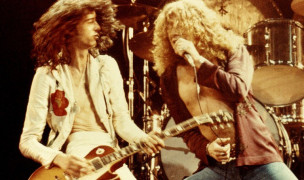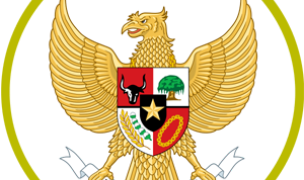 6 Terms
6 TermsHome > Terms > English (EN) > Hawai’ian archipelago
Hawai’ian archipelago
Commonly distilled into images of an island paradise of sun, surf and hula, the Hawai’ian archipelago in fact consists of 132 islands, atolls and reefs (6,470 square miles), which constitute, according to many travel magazines, the world’s favorite tropical-island destination. Only seven of its largest islands provide residence to the 50th state’s 1.2 million citizens, agriculture, industry and tourists. This geologic system represents a complexity and diversity that is only challenged by the unique culture that inhabits it.
This “authentic” Hawai’ian culture was first established by the ancient Hawai’ians— “people of old”—and developed through the cultural contributions of each successive ethnic group to acculturate in Hawai’i. Nonetheless, it is often eclipsed by the manufactured cultural images that are advertised and subsequently produced in order to maintain the 6 million plus tourists who visit annually.
It is important that the “authentic” culture actually includes multiple components. The first is the native Hawai’ian cultural component and an indigenous population originating in AD400–500 from the islands of Marquesas and Tahiti. Later components arise from the cultural amalgam developed from immigrants of many ethnic origins that date from the late eighteenth century onwards. Although these components differ significantly in their relative ages, their contemporary interactions are virtually inseparable due to the cultural fusion developed through the past 220 years of intense acculturation. Hence, some argue that since there is no single dominant group, all Hawai’ians are minorities.
This ideology permeates the state’s cultural atmosphere.
The first settlers arrived in Hawai’i around AD 400 from Marquesas. Instigated by unknown factors, these early Polynesians followed the land-faring birds they saw flying far from their own shores in the hopes of finding a suitable new home. Five hundred to six hundred years later, mass migration from Tahiti brought complicated religious and class systems into Hawai’i’s cultural realm. These settlers used a stellar navigational system focused on the North Star, or Hokulea, to transport people, animals and plants between Tahiti and Havaiki—the mythical homeland of the gods that later became Hawai’i. To bring order to a newly developing society these Hawai’ians instituted the rigid kapu system that dictated behavior in each facet of life. This system was guided by a complex hierarchy of gods, ancestral spirits, kahuna (priests), and ah’i (chiefs). Their culture was rich with me/e (song), oh (chant) and hula. (In ancient times, the hula had spiritual significance and was danced only by men—a far cry from its current tourist sensuality) At the time of Captain Cook’s “discovery” of Hawai’i in 1778, the Hawai’ian population had grown to 300,000 or more. Within the next seventy years, previously unknown diseases (smallpox, venereal diseases, measles, etc.) brought by sailors decreased the Hawai’ian population to only 50,000. During the same period, the foreign population increased, causing foreign governments to assert their influence in matters pertaining to land and political power. First, the British influenced the establishment of a monarchy Then, Russians and French tried to influence the developing political structure to support their expansionist tendencies. Finally the Americans, primarily through early missionary efforts, influenced the course of Hawai’ian history that led to the overthrow of the monarchy and annexation.
By the 1870s, the sugar industry grew to dominate the economy Its ever-increasing labor demand caused the importation of labor from around the world. These laborers came as indentured servants or in similar bonded conditions. They came mostly from the East (Japan, Okinawa, China, The Philippines), but also from European countries, including Germany Norway Spain and Portugal (Azores and Madeira Islands). Their absorption into mainstream society varied according to differing cultural practices regarding intermarriage and the strength of community ties with their countries of origin.
However, as the laborers became aware of the hardships of contract labor and the possibilities off the plantation, many sought to leave the industry once their contracts were fulfilled. In response to the growing discontent among these laborers, the Republic of Hawai’i in 1890 passed legislation under which Asians, particularly Chinese, who left agricultural work had to return to their country of origin. While some did so voluntarily most preferred to continue reaping the relatively higher economic benefits in Hawai’i.
Hence, this stipulation froze the contract laborers’ situation and led to increased intermarriage or the importation of spouses, mainly brides, from “home.” The Hawai’ian monarchy which started with Kamehameha I in the eighteenth century constituted Hawai’i’s government until its illegal overthrow in 1893. This government developed through the ancient governance of ali’i and Kamehameha I’s forceful consolidation of the chiefdoms of Kauai and Ni’ihau, Maui’ Hawai’i, Oahu, Molokai and Lanai. However, with the increase in the number of “outsiders,” conflicting beliefs regarding cultural practices were introduced. Such practices were adamantly denounced by the influential missionary presence and countered by cultural revitalists such as Lunalilo (Hawai’i’s last king). In 1900 Hawai’i became a US territory In the twentieth century early migrants were joined by immigrants from Korea, Vietnam, Puerto Rico and other Polynesian communities, as well as by more Caucasians (by boat) from the US mainland.
On December 7, 1941, the Japanese attack on Pearl Harbor brought the US into the Second World War. The war led to an increased Caucasian American population due to the expanding military presence on Oahu. This, in turn, became a watershed for tourist and Sunbelt development, a Hawai’ian dream for both mainlanders and foreigners (especially Japanese) who visit every year. With the increasing speed and availability of air travel, Hawai’i was ever more incorporated into the US, becoming a state in 1959.
Tourism has far surpassed the declining agricultural foundations of an older island, yet has raised conflicts about land use, respect for traditions, environmental planning— Hawai’i’s volcanoes, valleys and waters are important resources in themselves and shelter countless unique species—and authenticity. Guided by active state recruitment, which, since the 1980s, has looked beyond the main island to development of Maui and other destinations, tourism has prompted mainland and foreign investment but has also made the island vulnerable to economic downturns like the Asian economic crisis.
Hawai’i’s contemporary culture is thus complicated by mass-media renditions of “tourist island,” whether Betty Grable’s Song of the Island (1942), Elvis Presley’s Blue Hawaii (1961), the long-running television series Hawaii Five-0 (CBS, 1968–80), or the incessant commodification of tourist promotions. The conflict of imagery and local complexity proves especially visible in urban centers like Honolulu (365,272) or tourist clusters such as Kailua-Kona. Nonetheless, the cultural contributions of multiple ethnic groups, accumulated during the past 220 years, continue to define distinctive histories, religions, arts, foods, clothing, etc.—a mix that comprises contemporary Hawai’ian culture and perhaps a vision of a more truly global and multicultural US.
- Part of Speech: noun
- Synonym(s):
- Blossary:
- Industry/Domain: Culture
- Category: American culture
- Company: Routledge
- Product:
- Acronym-Abbreviation:
Other Languages:
Member comments
Terms in the News
Billy Morgan
Sports; Snowboarding
The British snowboarder Billy Morgan has landed the sport’s first ever 1800 quadruple cork. The rider, who represented Great Britain in the 2014 Winter Olympics in Sochi, was in Livigno, Italy, when he achieved the man-oeuvre. It involves flipping four times, while body also spins with five complete rotations on a sideways or downward-facing axis. The trick ...
Marzieh Afkham
Broadcasting & receiving; News
Marzieh Afkham, who is the country’s first foreign ministry spokeswoman, will head a mission in east Asia, the state news agency reported. It is not clear to which country she will be posted as her appointment has yet to be announced officially. Afkham will only be the second female ambassador Iran has had. Under the last shah’s rule, Mehrangiz Dolatshahi, a ...
Weekly Packet
Language; Online services; Slang; Internet
Weekly Packet or "Paquete Semanal" as it is known in Cuba is a term used by Cubans to describe the information that is gathered from the internet outside of Cuba and saved onto hard drives to be transported into Cuba itself. Weekly Packets are then sold to Cuban's without internet access, allowing them to obtain information just days - and sometimes hours - after it ...
Asian Infrastructure Investment Bank (AIIB)
Banking; Investment banking
The Asian Infrastructure Investment Bank (AIIB) is an international financial institution established to address the need in Asia for infrastructure development. According to the Asian Development Bank, Asia needs $800 billion each year for roads, ports, power plants or other infrastructure projects before 2020. Originally proposed by China in 2013, a signing ...
Spartan
Online services; Internet
Spartan is the codename given to the new Microsoft Windows 10 browser that will replace Microsoft Windows Internet Explorer. The new browser will be built from the ground up and disregard any code from the IE platform. It has a new rendering engine that is built to be compatible with how the web is written today. The name Spartan is named after the ...
Featured Terms
Vincent of Saragossa
Saint Vincent of Saragossa, also known as Vincent Martyr, Vincent of Huesca or Vincent the Deacon, is the patron saint of Lisbon and Valencia. His ...
Contributor
Featured blossaries
Marouane937
0
Terms
58
Blossaries
3
Followers
The Most Influential Rock Bands of the 1970s
 6 Terms
6 Terms
stanley soerianto
0
Terms
107
Blossaries
6
Followers
Indonesia Football Team
 10 Terms
10 Terms
Browers Terms By Category
- General astronomy(781)
- Astronaut(371)
- Planetary science(355)
- Moon(121)
- Comets(101)
- Mars(69)
Astronomy(1901) Terms
- Architecture(556)
- Interior design(194)
- Graphic design(194)
- Landscape design(94)
- Industrial design(20)
- Application design(17)
Design(1075) Terms
- General art history(577)
- Visual arts(575)
- Renaissance(22)
Art history(1174) Terms
- Osteopathy(423)
- Acupuncture(18)
- Alternative psychotherapy(17)
- Ayurveda(9)
- Homeopathy(7)
- Naturopathy(3)




